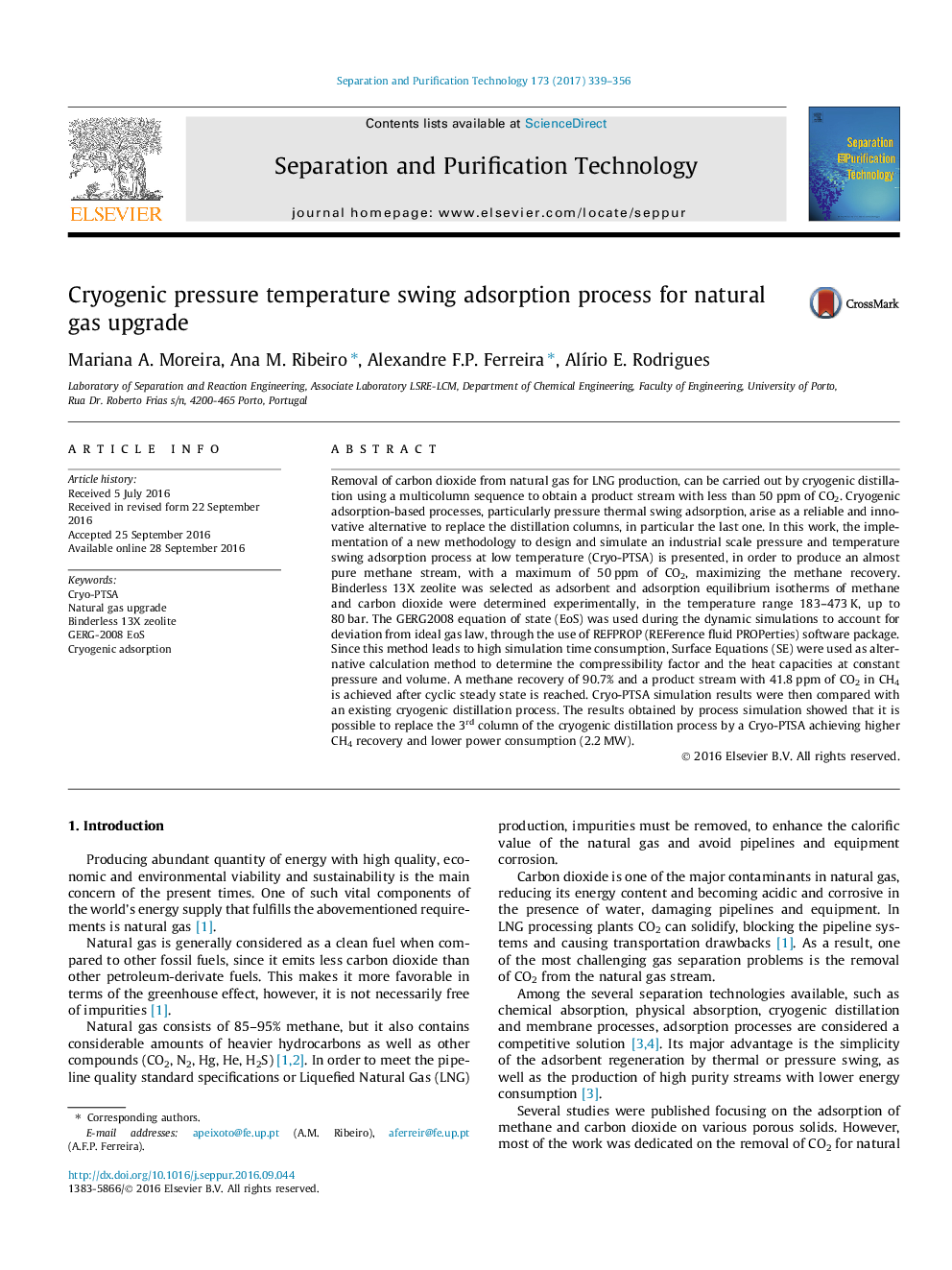| کد مقاله | کد نشریه | سال انتشار | مقاله انگلیسی | نسخه تمام متن |
|---|---|---|---|---|
| 4990309 | 1456947 | 2017 | 18 صفحه PDF | دانلود رایگان |
عنوان انگلیسی مقاله ISI
Cryogenic pressure temperature swing adsorption process for natural gas upgrade
ترجمه فارسی عنوان
فرایند جذب دماسنج فشار فریزر برای ارتقاء گاز طبیعی
دانلود مقاله + سفارش ترجمه
دانلود مقاله ISI انگلیسی
رایگان برای ایرانیان
موضوعات مرتبط
مهندسی و علوم پایه
مهندسی شیمی
تصفیه و جداسازی
چکیده انگلیسی
Removal of carbon dioxide from natural gas for LNG production, can be carried out by cryogenic distillation using a multicolumn sequence to obtain a product stream with less than 50Â ppm of CO2. Cryogenic adsorption-based processes, particularly pressure thermal swing adsorption, arise as a reliable and innovative alternative to replace the distillation columns, in particular the last one. In this work, the implementation of a new methodology to design and simulate an industrial scale pressure and temperature swing adsorption process at low temperature (Cryo-PTSA) is presented, in order to produce an almost pure methane stream, with a maximum of 50Â ppm of CO2, maximizing the methane recovery. Binderless 13X zeolite was selected as adsorbent and adsorption equilibrium isotherms of methane and carbon dioxide were determined experimentally, in the temperature range 183-473Â K, up to 80Â bar. The GERG2008 equation of state (EoS) was used during the dynamic simulations to account for deviation from ideal gas law, through the use of REFPROP (REFerence fluid PROPerties) software package. Since this method leads to high simulation time consumption, Surface Equations (SE) were used as alternative calculation method to determine the compressibility factor and the heat capacities at constant pressure and volume. A methane recovery of 90.7% and a product stream with 41.8Â ppm of CO2 in CH4 is achieved after cyclic steady state is reached. Cryo-PTSA simulation results were then compared with an existing cryogenic distillation process. The results obtained by process simulation showed that it is possible to replace the 3rd column of the cryogenic distillation process by a Cryo-PTSA achieving higher CH4 recovery and lower power consumption (2.2Â MW).
ناشر
Database: Elsevier - ScienceDirect (ساینس دایرکت)
Journal: Separation and Purification Technology - Volume 173, 1 February 2017, Pages 339-356
Journal: Separation and Purification Technology - Volume 173, 1 February 2017, Pages 339-356
نویسندگان
Mariana A. Moreira, Ana M. Ribeiro, Alexandre F.P. Ferreira, AlÃrio E. Rodrigues,
